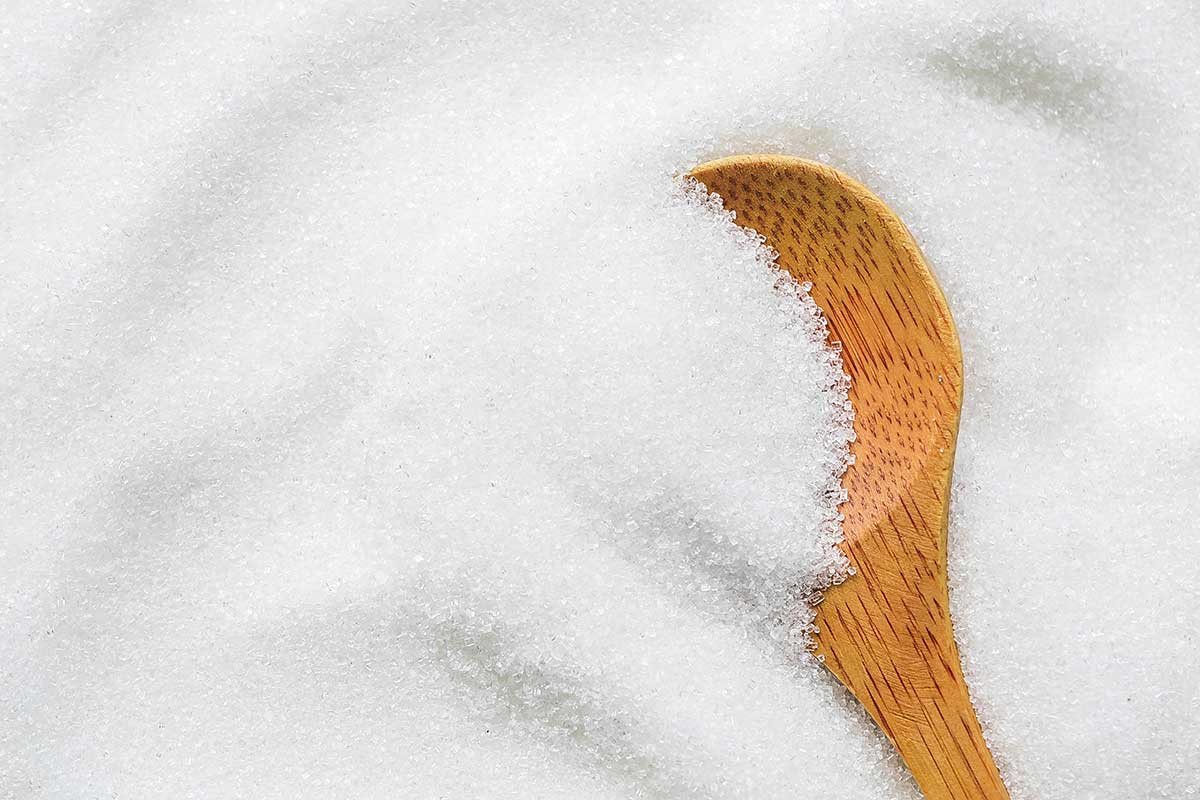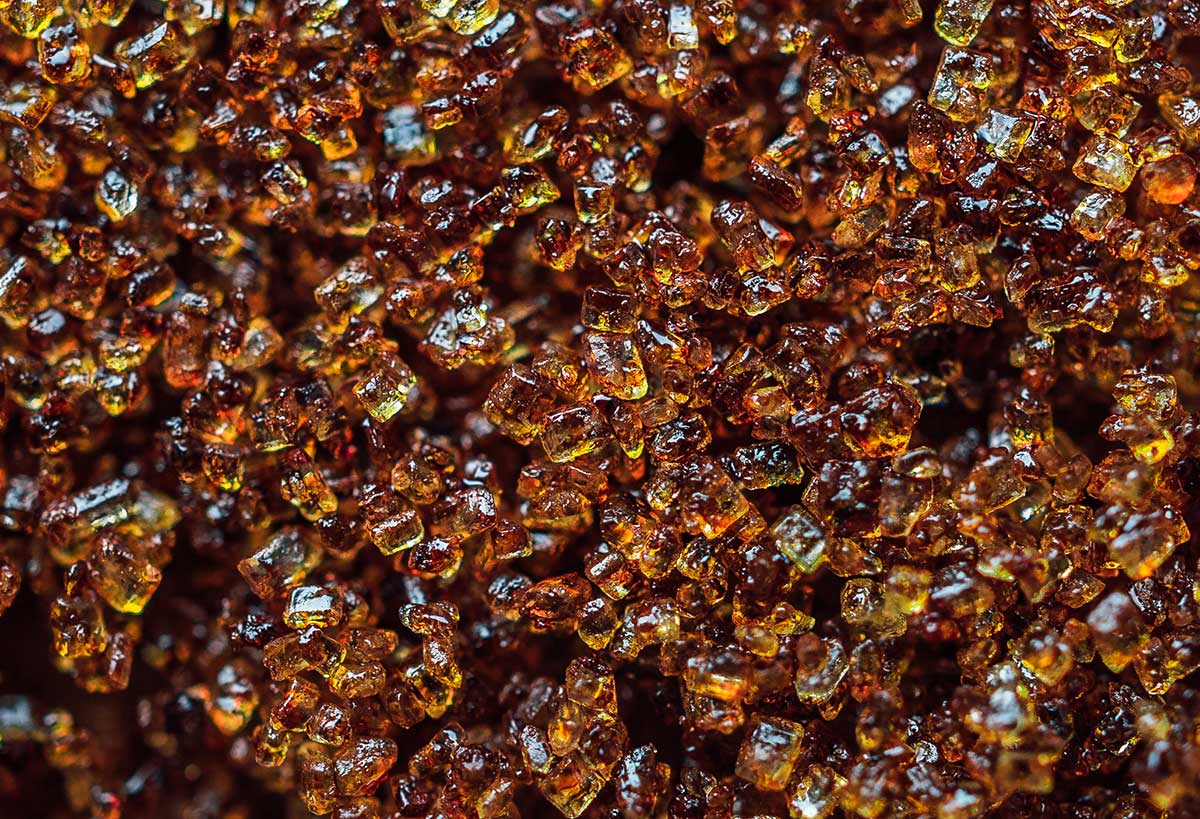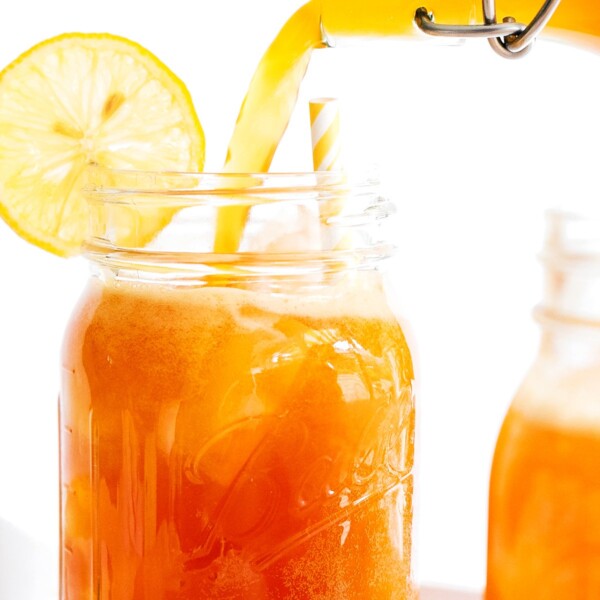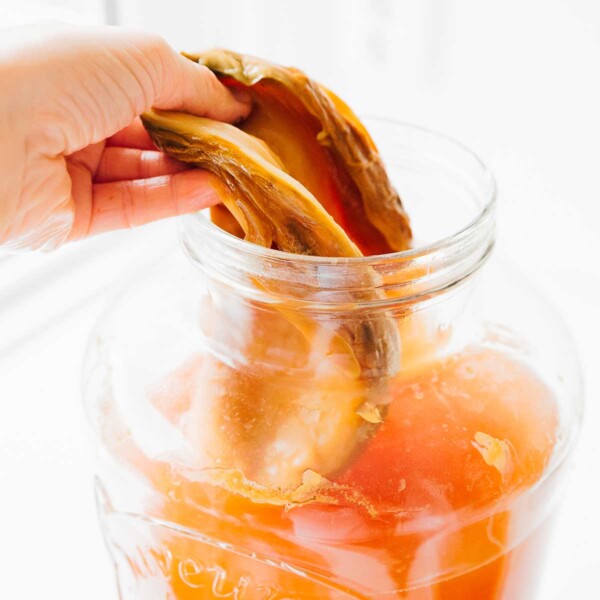Which sugars should you use for making homemade kombucha? And which sweeteners should you avoid? Breaking down the best sugar for kombucha here!

It can be tempting to cut out the sugar when brewing kombucha. I mean, do we really need to add that much sugar? (Answer, yes) (but here’s how to make keto kombucha, if that’s your thing).
Sugar is one of the most important ingredients in your fermentation, and choosing the right sugar is just as important (along with choosing the right tea for kombucha and best water for brewing).
Sugar plays the integral role of feeding the yeast. The yeast in the SCOBY eat the sugar, transforming it into ethanol. The bacteria feed on this ethanol, turning it into acidity and giving kombucha its distinctively sour taste.
So which sugar is best for brewing kombucha?

The best sugars for brewing kombucha
While there is a long list of tea you can play around with in kombucha, the list of potential sugars is a bit shorter. As always, feel free to experiment with different sugars, but keep in mind that your SCOBY and fermentation could be affected.
White Table Sugar: This is simply pure white sugar, made from either cane or beets. It’s our favorite sugar for brewing kombucha for its predictability and consistency.
Organic Cane Juice Crystals: For the folks who prefer organic sugars, this unbleached sugar does the job, while also having trace amounts of minerals (unlike the white table sugar, which has none).
Raw or Whole Cane Sugar: These sugars are recommended with reservation. They are less refined and can be hard on your SCOBY, but many brewers like using them.
“Any reports on use of date sugar in the initial ferment??”

Sweeteners to avoid when making kombucha
Brown Sugar: With added molasses, brown sugar produces inconsistent batches and can harm the SCOBY over time.
Honey: This natural sugar can contain botulism bacteria (especially raw honey), which could create a dangerous brew.
Agave, Maple, Coconut, Palm Sugar: These plant extracts can be hard on the SCOBY while also influencing the flavor of the kombucha.
Sugar Substitutes: Sugar-free alternatives like stevia, xylitol, or aspartame should not be used, as they don’t provide the energy needed for the yeasts and bacteria to thrive. If you want to create a lower sugar kombucha, simply let the first fermentation run for a longer period of time, giving the yeast more time to eat up the sugar.
Powdered Sugar: Otherwise known as icing sugar, this powdery sweetener contains cornstarch.




Can I use raw honey unfiltered in my second fermentation?
I know can’t be used in first fermentation.
Yes that should be fine in the second ferm 🙂
I’m VERY new to Kombucha making but want to try a bottle with fruit & a 2nfementation. Is it ok to use the bottles my sstore bought Synergy brand came in? Would they be pressure sensitive or whatever it is that keeps the caps from blowing off?
Thanks!
Welcome to the kombucha club! 🎉 Yes, you can reuse your Synergy bottles for second fermentation—they’re actually a great option. They’re made to handle the pressure from carbonation, so as long as the caps still fit tightly, you’re good to go!
That said, always do a quick check: make sure there are no chips or cracks, and keep an eye on them as they carbonate (burp them once a day if you’re nervous about pressure).
I was given a Scoby from a stranger, someone who wanted to share & i’ve had it for 3 months in the jar i was given it in. Can it go bad or off? I live in a rustic area with little living space & the jar has been stored in a plastic bin outdoors & gone thru major temperature differences cold, hot etc. Is this a problem & will it affect its performance etc. It will likely remain there for another month or 2 until i get the supplies needed & find a space to work with it. I spend a fortune on store bought kombucha & like Health-ade Ginger Lemon & their Cayenne kombuchas with lemon-lime-ginger & cayenne as the main flavor ingredients. Do u think i can be successful somewhat reproducing those flavors? Thanks!
What an awesome story—love that someone passed along a SCOBY to you! That said, storing it outside in a bin for months with big temperature swings can definitely impact its health. Extreme cold can slow or kill off the yeast and bacteria, and high heat can encourage mold or unwanted microbes. If the SCOBY still looks and smells normal (tangy, vinegary, no fuzzy or colored mold), it might still be usable—but it’s hard to say for sure without seeing or smelling it. Once you’re ready, I’d suggest starting a small test batch with fresh sweet tea and watching it closely for signs of activity.
And yes—you can totally make a homemade version of those ginger-lemon-cayenne flavors! After your first fermentation, just add fresh lemon juice, grated ginger, and a tiny pinch of cayenne to your bottles for F2. You’ll get that zingy, spicy kick that Health-Ade is known for. Can’t wait for you to get started brewing again—you’re on the right track!
I made my first fermentation today and my scoby is on the bottom of the glass jar. Is that normal?
Thanks for your question—and welcome to the world of brewing! Yes, it’s totally normal for your SCOBY to sink, float, hang sideways, or do a little dance somewhere in between 😄 The position doesn’t affect the fermentation; it’ll still do its job just fine. Over the next few days, you may see a new baby SCOBY start to form across the surface—that’s a good sign everything’s working as it should!
I have made two batches now and i am getting great flavour but no fizz.
What am i doing wrong?
Have you checked out this guide yet? 🙂 I troubleshoot a bunch of reasons your kombucha may not be fizzy!